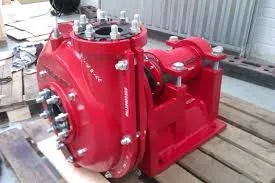Azerbaijani
- Afrikaans
- Albanian
- Amharic
- Arabic
- Armenian
- Azerbaijani
- Basque
- Belarusian
- Bengali
- Bosnian
- Bulgarian
- Catalan
- Cebuano
- Corsican
- Croatian
- Czech
- Danish
- Dutch
- English
- Esperanto
- Estonian
- Finnish
- French
- Frisian
- Galician
- Georgian
- German
- Greek
- Gujarati
- Haitian Creole
- hausa
- hawaiian
- Hebrew
- Hindi
- Miao
- Hungarian
- Icelandic
- igbo
- Indonesian
- irish
- Italian
- Japanese
- Javanese
- Kannada
- kazakh
- Khmer
- Rwandese
- Korean
- Kurdish
- Kyrgyz
- Lao
- Latin
- Latvian
- Lithuanian
- Luxembourgish
- Macedonian
- Malgashi
- Malay
- Malayalam
- Maltese
- Maori
- Marathi
- Mongolian
- Myanmar
- Nepali
- Norwegian
- Norwegian
- Occitan
- Pashto
- Persian
- Polish
- Portuguese
- Punjabi
- Romanian
- Russian
- Samoan
- Scottish Gaelic
- Serbian
- Sesotho
- Shona
- Sindhi
- Sinhala
- Slovak
- Slovenian
- Somali
- Spanish
- Sundanese
- Swahili
- Swedish
- Tagalog
- Tajik
- Tamil
- Tatar
- Telugu
- Thai
- Turkish
- Turkmen
- Ukrainian
- Urdu
- Uighur
- Uzbek
- Vietnamese
- Welsh
- Bantu
- Yiddish
- Yoruba
- Zulu
Telephone: +86 13120555503
Email: frank@cypump.com
Dek . 25, 2024 03:26 Back to list
supply wq/qw submersible sewage pump
Submersible Sewage Pumps Essential Solutions for Wastewater Management
Submersible sewage pumps are critical components in the effective management of wastewater. Designed for environments where liquids contain solids or dirty water, these pumps play a vital role in municipal sewage operations, industrial applications, and domestic waste handling. The market offers a range of options, often characterized by their capabilities, durability, and efficiency in various sewage disposal applications.
What is a Submersible Sewage Pump?
A submersible sewage pump is a type of pump that operates submerged in the fluid it is pumping. Unlike standard pumps, which draw water upwards, submersible pumps push fluids to the surface through a discharge pipe. This design allows for smoother operation and reduced risk of air exposure, which can harm the pump’s functionality. Typically, these pumps are used in wastewater treatment plants, basements, and other locations where liquids are prone to stagnation.
Key Features and Specifications
Several features characterize submersible sewage pumps, and understanding these can aid in selecting the right model for specific needs. Key specifications to consider include
1. Capacity The capacity of a sewage pump is defined by its flow rate, usually measured in gallons per minute (GPM) or liters per second (L/s). Higher capacity pumps can handle larger volumes of sewage and are suitable for heavy-duty environments.
2. Head Height This refers to the maximum height at which the pump can effectively move sewage. Knowing the head height is crucial for ensuring the pump can discharge waste to the desired location.
3. Construction Material Pumps are often made from cast iron, stainless steel, or thermoplastic. The choice of material impacts the pump’s durability and resistance to corrosion, especially when dealing with harsh waste chemicals.
4. Impeller Design The impeller’s design affects the pump’s efficiency and ability to handle solids. Vortex and channel impellers are common in submersible sewage pumps, allowing for the passage of solid waste without clogging.
5. Motor Size and Type The motor’s power influences the pump’s performance. Submersible pumps typically come with either electric or hydraulic motors, with electric motors being the most common.
Applications of Submersible Sewage Pumps
supply wq/qw submersible sewage pump

Submersible sewage pumps are utilized across numerous sectors, including
- Municipal Wastewater Management Often employed in sewage treatment plants, these pumps facilitate the movement of wastewater through treatment systems.
- Industrial Facilities Industries generating wastewater, such as food processing, pharmaceuticals, and chemical manufacturing, rely on submersible pumps for efficient waste disposal.
- Residential Use Homeowners use submersible sewage pumps in basements or areas susceptible to flooding to prevent water accumulation.
Advantages of Submersible Sewage Pumps
The popularity of submersible pumps can be attributed to several advantages
1. Efficiency Operating submerged allows for greater energy efficiency, leading to lower operational costs.
2. Reduced Noise Designed for quiet operation, submersible pumps are less disruptive compared to surface pumps.
3. Compact Design Their design saves space and allows installation in tighter areas compared to conventional pumps.
4. Versatility Capable of handling various types of wastewater, submersible pumps can adapt to different applications with ease.
Conclusion
Submersible sewage pumps are indispensable for effective wastewater management across various applications. Their ability to handle solids, reduced environmental impact, and enhanced efficiency make them a preferred choice in municipal, industrial, and residential contexts. As technology continues to improve, newer models are expected to deliver even greater performance, reliability, and energy efficiency, setting the foundation for better wastewater treatment practices in the future. With the ongoing demand for effective sewage management solutions, submersible pumps will continue to be the cornerstone of effective waste disposal strategies.
-
Reliable Non-Clog Sewage Pumps with GPT-4-Turbo Tech
NewsAug.04,2025
-
High-Performance Air Pumps for Sand & Gravel | Efficient Transport
NewsAug.03,2025
-
ISG Series Vertical Pipeline Pump - Chi Yuan Pumps Co., LTD.|Energy Efficiency, Corrosion Resistance
NewsAug.03,2025
-
ISG Series Pipeline Pump - Chi Yuan Pumps | Energy Efficiency&Compact Design
NewsAug.03,2025
-
ISG Series Vertical Pipeline Pump - Chi Yuan Pumps Co., LTD.|High Efficiency, Low Noise, Durable
NewsAug.02,2025
-
ISG Series Vertical Pipeline Pump - Chi Yuan Pumps | High Efficiency, Low Noise
NewsAug.02,2025










